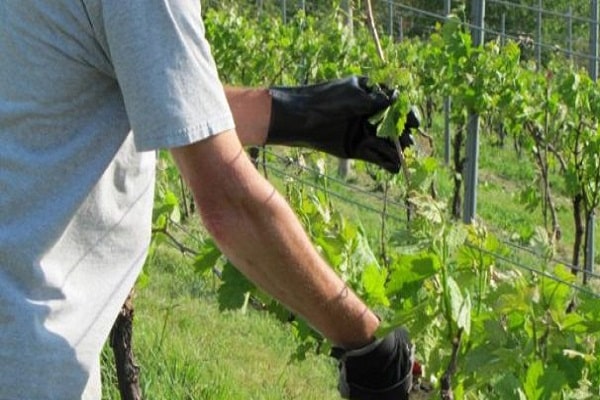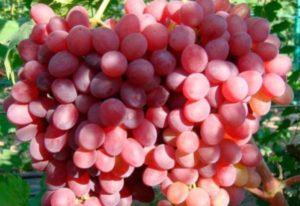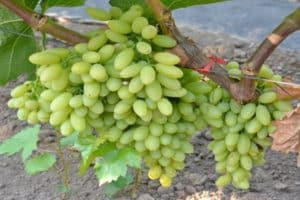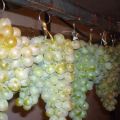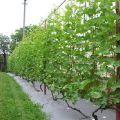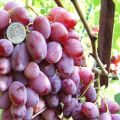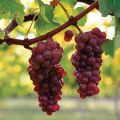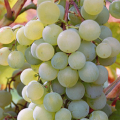What to do and how to avoid peas of grapes, causes of the problem and prevention
Many are engaged in the cultivation of grapes in their dachas or personal plots. With proper care and if the variety is selected according to climatic conditions, the plant produces a bountiful harvest. However, it happens that after flowering, the fruit ovaries develop poorly and remain tiny in size. What to do with the problem of grape peas, and for what reasons it happens.
What are grape peas
Piping is the ripening of berries of various sizes on one bunch of grapes. The palatability often remains unchanged, but, unlike the normal size of the grapes, the small fruits look inferior. Against the background of the usual size of the berries, the small ones resemble peas. This is where the name of the problem comes from.
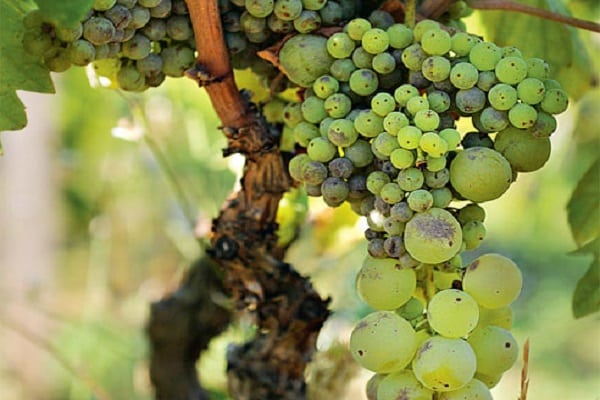
There are two options for polishing. When the bunch is filled with large berries, and small ones are visible between them. Or, on the contrary, only a couple of three grapes of normal size ripen on the brush. Due to their appearance, the berries are difficult to sell and lack seeds.
Common Causes
Why is grape peeling happening? Gardeners unanimously say that more than one factor affects this process. Experienced growers identify the following main reasons:
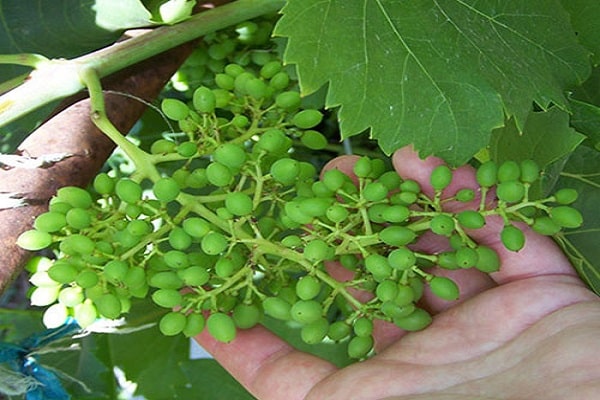
- Pollination deficiency.
- Heavy load on the vine.
- Lack of moisture and feeding.
- Features of the variety and unsuitable climatic conditions.
Lack of pollination
The most common reason for the formation of small grape fruits. Bisexual varieties, which have long and straight pistils and stamens, are self-pollinating. Pollinating insects are required for female flowers that have short and curled parts to reproduce.
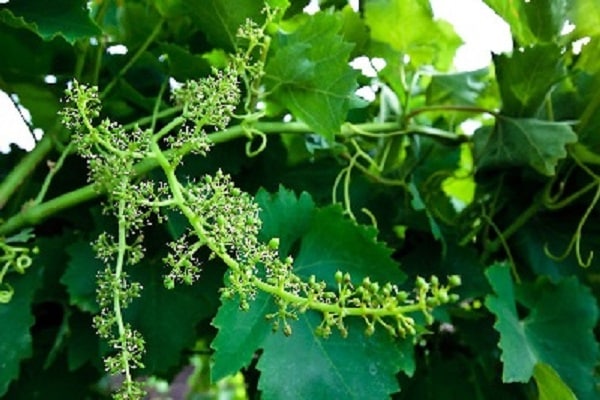
The crop is exposed to peas due to the following factors:
- Bees are not attracted to shrubs.
- Heat and drought dry out the pollen, which is easily blown away by the wind.
- A large number of female inflorescences that require pollinators.
- The shrub is planted in a place where various objects (fence, wall, trees) interfere with the process of wind pollination.
- The pollen is washed off in the rain.
If the plant is not sufficiently pollinated, most of its inflorescences fall off. For this reason, in almost all cases, grape peas occur.

Loose vines and vegetation overload
In the case where the plant has formed a large number of shoots, a lot of foliage and fruit ovaries are formed.This amount of vegetation overloads the vine, resulting in a pea crop.
For young bushes, this phenomenon is considered normal, since the grapes, as they grow, accumulate the strength of fruiting.
As for an adult shrub, the exchange of water and nutrients inside the plant is disturbed. Therefore, flowers and ovaries do not receive proper nutrition.
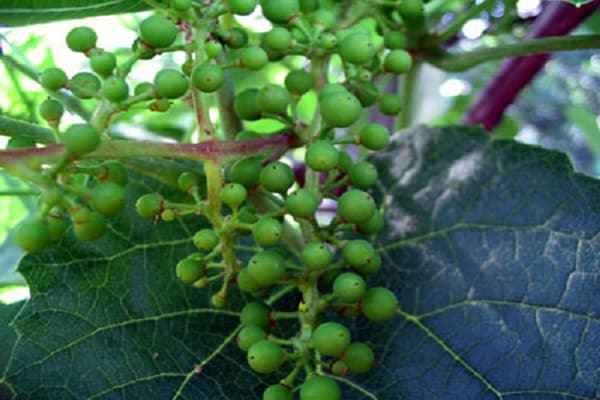
Lack of watering and fertilization
Among the factors causing grape peas are the lack of water and mineral fertilizers. This leads to a violation of the development of shrubs and the formation of the crop. In addition, top dressing is not recommended during the cold season, since grapes, due to low temperatures, do not take fertilizers well.
The plant feels comfortable and develops well in moist soil. To prevent the soil from drying out, you must:
- Systematically water the shrubs.
- Monitor the condition of the soil.
- Loosen the land around the culture.
If the summer is hot and dry, the shrubs require abundant watering - 8-10 times per summer will be enough.
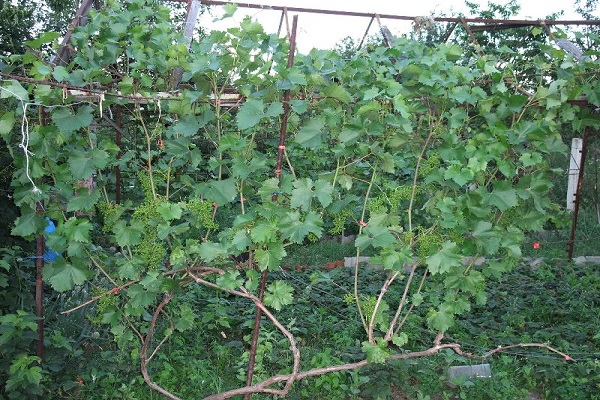
Varietal feature
Grape experts recommend studying the variety before starting to breed a variety of this culture. In the description, they often indicate the tendency of the variety to such a nuisance as peas. Of course, careful caring for the shrub will increase yields, but you should not count on it too much.
In recent years, breeders have developed many unpretentious hybrid varieties. For example, Arcadia and Augustine give an inferior crop only in the absence of plant care.
Do not forget that representatives of the culture bear fruit well when planted in well-ventilated areas with a lot of sunlight.

Unsuitable weather conditions
Weather conditions can be a serious reason for the lack of a rich and healthy harvest. The plant will not be able to fully carry out the pollination process. Low air humidity, dry and hot weather, up to a maximum of 30 degrees Celsius, are considered favorable conditions.
In the case when it rains during the flowering period, the pollen will be washed away, and as a result, tiny berries will be obtained. The opposite climatic conditions (high air temperature and lack of precipitation) will also harm the grapes. In this case, the pollen on the inflorescences dries up and cannot attach to another flower for pollination.
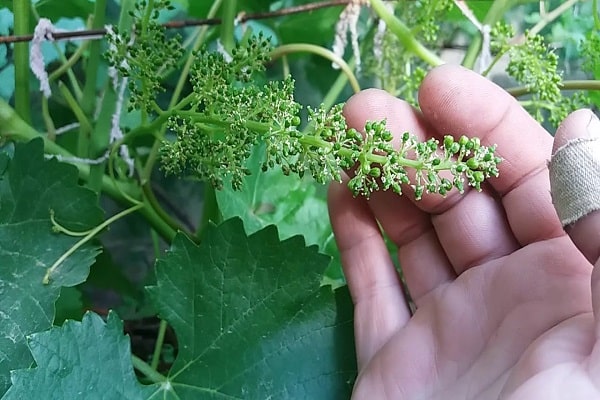
Signs of a pea bunch
The obvious signs of pea berries are:
- Excessive shedding of flowers and ovaries.
- Lack of pollinating insects (if required).
- Half of the berries in a bunch, at a certain moment, stop developing and become larger.
If you carefully monitor the condition of the bushes, and already at the first stage predict the problem, there is an opportunity to fix everything. It is only necessary to take appropriate measures.
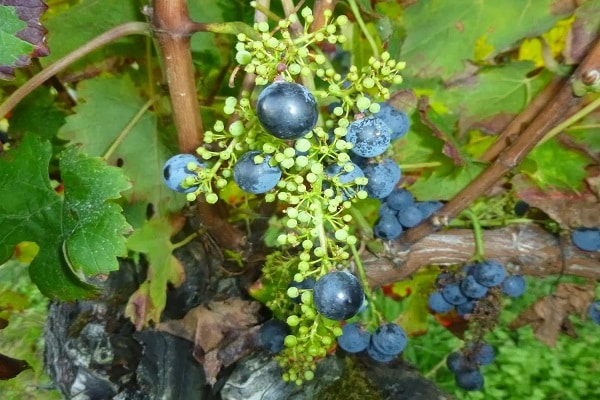
Control methods
In order not to get a harvest of small berries, you need to know how to avoid this trouble. In case of unsuccessful fruiting, the formation of pea-sized fruits, it is necessary to prepare shrubs for the next fertile year, that is, to make a kind of treatment.
Improving the quality of pollination
The ability of the plant to fully pollinate the inflorescences depends on the correctly chosen place for planting grapes. There are several ways to attract pollinator insects, as well as improve the quality of insemination:
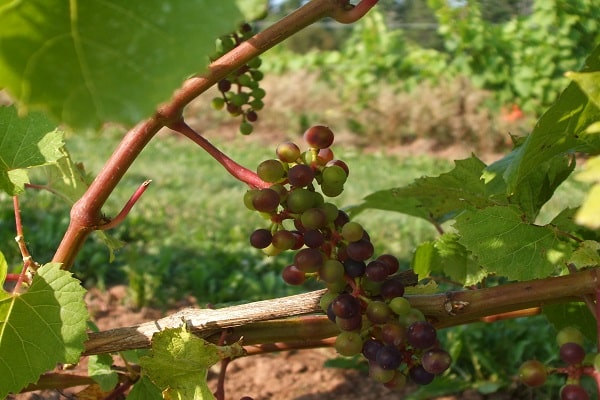
- Plant plants that attract bees in your garden.
- Purchase grape varieties of different sexes.
- Make sure that there is good air circulation near bushes.
- Craft a special pollination device.To do this, rabbit hair is attached to a wooden block. With the help of animal fluff, pollen is safely transferred to female inflorescences.
- Spray sweet bee bait onto the bush.
- Hand pollination.

Choosing the right variety
Experienced growers have identified several varieties that are more prone to peas. These include: Talisman, Laura and Kesha. Among bisexual varieties, the problem of small berries is susceptible to: Timur, Summer Muscat, Kodryanka, Strashinsky and Muscat Rusbol.
But do not forget that if all the necessary measures are taken in time, trouble can be avoided.
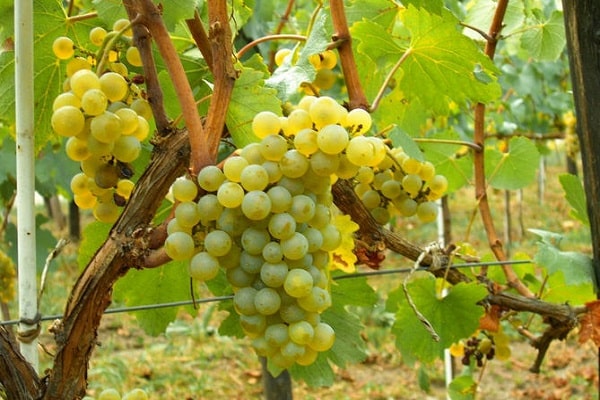
Correct care
To ensure proper care for the shrubs, it is necessary to monitor the moisture content of the soil, if necessary, the number of irrigations must be increased, especially in the heat. For better penetration of moisture and fertilizers, the soil around the shrub must be loosened, this will also help in the fight against peas.
Conduct periodic feeding with potassium, phosphorus, magnesium, boron, nitrogen and zinc. At the same time, it is recommended to select high-quality products containing these elements. In addition to peas, the plant signals a lack of essential microelements with spots on the leaves and branches, this also needs to be paid attention to.
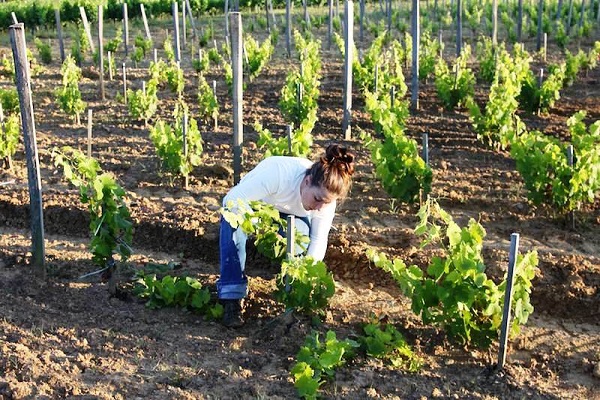
Pruning and shaping vines to improve berry quality
To deal with an overabundance of vegetation on the vine, which leads to incompletely ripe fruits, it is necessary as follows:
- With sufficient pollination, trim off excess ovaries on the bushes.
- Make sure that there are no dry, loose or damaged branches. These branches need to be deleted. In addition, the crown should not be thickened.
- Get rid of all bunches of grapes that show signs of peas at the initial stage.
- A few days before the beginning of the flowering period, pinch young shoots.
Handling grapes is a common nuisance, but timely measures and careful maintenance of the vineyard help to avoid problems with the harvest.
